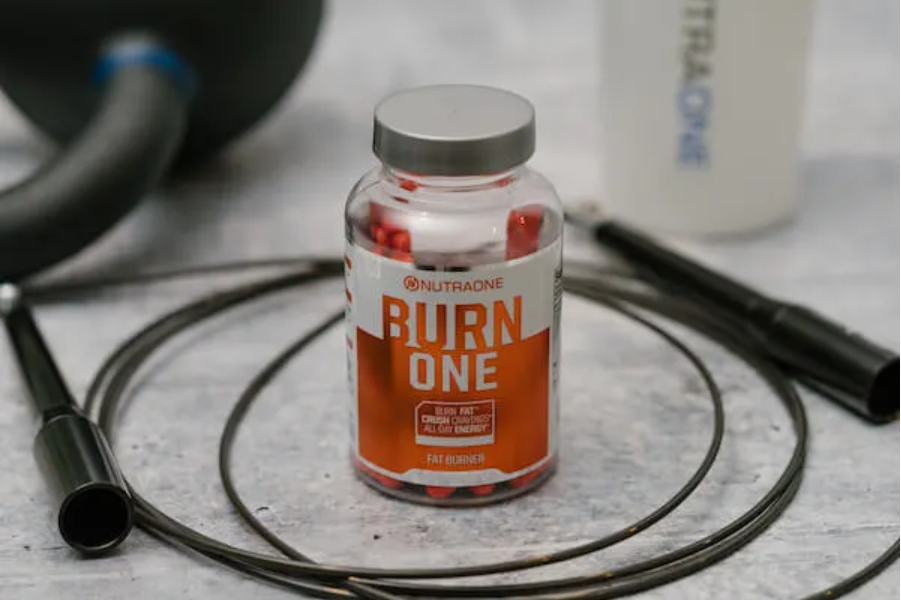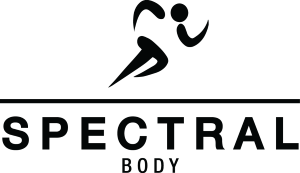
With the current health crisis, methods for boosting one’s immune system are more of an interest than ever. While there are plenty of vitamins and supplements that can help in this endeavor, exercise also plays a big role. High-intensity workouts, such as interval running, have become increasingly popular in curbing weight gain and health concerns. But can increasing intensity through interval running improve immune system function?
When it comes to this question, the answer isn’t clear cut. Interval running has long-term effects on the body that can be linked to improved immunity over time. Still, in the short-term, some studies suggest that moderate-intensity training might be better for improving immediate immune system function. Let’s dig in.

What Is Interval Running?
Interval running is a high-intensity workout that, as its name suggests, is broken up into separate parts. The entire point of interval training is to balance the spurts of high-intensity movement with more moderate recovery periods. So, when running, you’d alternate between vigorous sprints and fast-paced walking or jogging.
This type of interval training boasts a variety of benefits for those who choose to practice it regularly. Not only does the workout’s increased intensity allow you to burn more calories, but it improves stamina over time. Runners looking to raise their endurance will benefit from interval running as they continue to practice it. By performing these high-intensity regimens regularly, you can strengthen the body and push past limits.
Due to its faster speeds, interval training also makes workouts less time-consuming. The ability to burn more calories while dedicating less time to exercise is another reason many are drawn to this type of routine.
Of course, there are physical health benefits to consider when it comes to interval training as well. Numerous studies highlight positive long-term effects on the body, many of which suggest this type of exercise may be worthwhile in the long run.

How Does HIIT Affect the Body?
So how does interval running — and HIIT in general — affect your body? For one, it appears to result in better cardiovascular health over time. A 2015 study from Sports Medicine shows that, for healthy adults, HIIT training leads to improved cardiovascular function in the long-term. It seems the aerobic nature of interval training results in better blood vessel function, as well as improved VO2. According to a study from the British Journal of Sports Medicine, individuals with chronic cardiovascular diseases who practiced HIIT showcased twice the cardiovascular health as their counterparts who engaged in more moderate levels of exercise.
Beyond heart health, interval running can also help boost your metabolism. HIIT decreases fasting blood glucose levels and lowers insulin resistance, both factors associated with good metabolic health. Since your metabolic health affects just about every bodily function — and has been closely linked to immune function — this could help boost immunity over time.
There have also been studies suggesting that HIIT improves cognitive function, and specifically, cognitive control and memory. With interval training showing long-term effects in both the brain and the body, it’s no wonder it’s become a regularly utilized method of exercise.

How Does It Impact Your Immune System?
So, how exactly does all of this impact your immune system? Well, many of the physical effects related to interval running have also been linked to better immune health. Specifically, boosted metabolic and cardiovascular health can strengthen your immunity. That’s why, in the long-term, interval running could result in a healthier immune system. There is a difference when you look at the short-term effects, however.
Due to the strenuous nature of HIIT, its immediate effects on the body may be less ideal. There’s no denying interval training can take a physical toll on you, especially when done too often. In fact, some studies have shown those partaking in HIIT to have fewer immune cells afterward than those practicing a more moderate workout regimen. One review from the Journal of Applied Physiology even reports that there’s a window following HIIT workouts, during which you’re actually more susceptible to coming down with an illness.
This makes sense when you consider the immediate effects HIIT exercise has on the body. Because your body is working at the maximum output during something like interval running, it releases stress hormones during the process. Those hormones can lead to lower immunity, at least until your body recovers. Putting chronic stress on the body has been linked to both decreased cell activity and decreased antibody production. Given the importance of white blood cells and antibodies in fighting unwanted infections, this could be a downside to HIIT.
Done too frequently, interval training can also increase inflammation. Chronic inflammation is another physical factor that could impact your immune response negatively. Of course, if you handle HIIT correctly, you can at least avoid some of the fallout. Practicing proper nutrition, giving your body adequate rest, and hydrating regularly should all offset any immediate negative effects of workouts like interval running. Stocking up on carbohydrates may also minimize the impact intense exercise has on immunity.
Even with these short-term effects, the long-term benefits of interval running may be worth it. These are, however, details to keep in mind. If you’re counting on HIIT to prevent you from getting sick, it may actually leave you more vulnerable. If that doesn’t sit well with you, a more moderate exercise regimen may be a better match.
If you do decide interval running is for you, however, these short-term effects serve as a reminder not to overdo it. Experts recommend keeping interval training to two to three days per week. The remainder of your time should be spent allowing your body to recover. You’ll also want to keep an eye out for signs of burnout, like fatigue or moodiness.
How to Decide If Interval Running Is for You
Now that you have a better understanding of how interval running affects the body in the short- and long-term, you can decide if it’s right for you. Due to the heavy output required, HIIT isn’t for everyone. You’ll need a good amount of dedication and stamina in order to keep up with such a routine. You’ll also need to ensure it aligns with your goals. If you’re looking to boost your bodily function in a more long-term way, interval running is a solid choice. The same can be said for those looking to lose weight or decrease exercise time.
If you have a health condition, it’s also important to do your research and check with your doctor prior to starting an interval-running regimen. Those with chronic muscle and joint problems may worsen the problem with HIIT. It’s also not always safe to partake in interval running with certain cardiovascular ailments. If you’re concerned, consulting a doctor is always the best bet.
If you’re unsure if interval running aligns with your goals, you can also create a pro and con list like the one below.
| Pros | Cons |
| Long-term cardiovascular health | Increased stress hormones |
| Improved metabolic health | Immediate vulnerability to sickness |
| Faster calorie burn/less time exercising | Could lead to physical burnout |
| Increased immunity in time | May not be doable with health conditions |

Setting Up Your Regimen
If you’ve done the math and decided interval running is something you’d like to try, here are the steps you should take to set up your regimen.
| Step One: Start with a warm-up. | Tip: Doing a light jog for about 10 minutes should prepare you for the rest of the workout. |
| Step Two: Decide on an interval and run for that amount of time. | Tip: When deciding on your interval pace and time, you should start with something that’s not too intense but remains a step up from what you’re used to. |
| Step Three: Following each high-intensity interval, set a rest interval. | Tip: Your rest interval should be a steady jog or fast-paced walk. |
| Step Four: Repeat the high-intensity and rest intervals until you feel you’re unable to continue. | Tip: It’s critical you know your limits when repeating intervals. Don’t push too hard or you’ll risk hurting yourself or getting sick. |
| Step Five: Hydrate and spend time stretching. | Tip: Look up stretches that will ease the tension you’re putting on the muscles you use while exercising. |
| Step Six: Monitor how your body feels following each of your HIIT workouts. | Tip: If you begin feeling fatigued or unwell, make sure to take rest days to recover. Also, never workout when you have cold or flu symptoms. Always wait for symptoms to reside before returning to interval running. |
If you’re hoping to strengthen your immune system, the last two steps are critical. Hydrating and stretching will ease the strain you’re putting on your body. Meanwhile, make sure you don’t overdo your HIIT will decrease the likelihood of you getting sick. With luck, it should also help improve your immune function over time. It will take hard work and dedication, but your physical health should improve by leaps and bounds if you stay consistent. In the long run, your body just may thank you for the effort.
Some Of Our Favorite Items To Help Your Workouts
- Burn One By NutraOne. Fat Burner Energy Boost

BURN ONE – Fat Burner $33.99
Looking to supercharge your HIIT workouts? Skip Starbucks and long lines at the coffee shop with a dose of Burn One 250mg of clean caffiene. This supplement is all-natural and made in GMP factory in Quebec Canada. Try a bottle of this supplement risk free and witness how you can get the perfect workout with no before or after jitters.
2. CLA One – Metabolism Booster

CLA ONE – Conjugated Linoleic Acid $25.99
If you’re looking to boost your immune system and liver efficiency while shedding fat at the same time this is the supplement for you. CLA One is a staple and every bodybuilder and athletes diet, you can promote fat loss rapidly with a few pills in between training and meals each day.
3. Detox One

Detox One – Toxin Flush $33.99
My third pick is Detox One, This supplement will benefit your interval training in a way you wouldn’t even realize. A huge part of training and building a strong immune system is the nutrients you consume, when adding detox one to your regimen you can’t lose. Detox One will flush all the impurities out of your body in safe and natural way and help you absorb the nutrients your body thrives on. I noticed a flatter stomach and increased energy after 3-4 weeks, you will have to try it to see what i’m talking about.
My Final Pick For Interval Running – The FDBRO Elevation Mask

FDBRO TRAINING MASK – $57.99
I think that one thing most athletes would agree is that wearing an elevation mask while doing HIIT or Interval training is one of the hardest exercises to do. Wearing this oxygen cutting training mask takes a lot of experience and mental toughness. It simulates training in high altitudes and may have your body shaking in fear when you feel like you can barely breathe when set on the highest setting. The rewards of wearing one are monumental, Long endurance and strengthening the respiratory system are just a few to mention. You should seriously consider ordering one of these training masks if your interval workout start getting too easy.
Leave a comment below and let us know your experience with interval training and how it has improved your health and physique.






Leave A Comment
You must be logged in to post a comment.